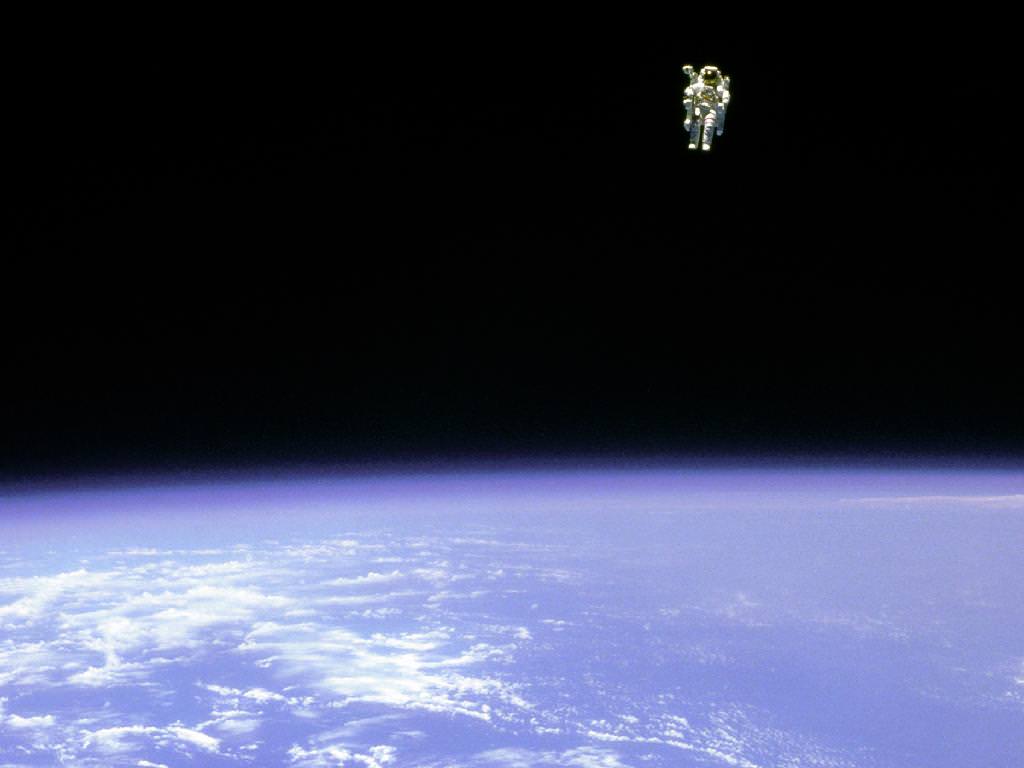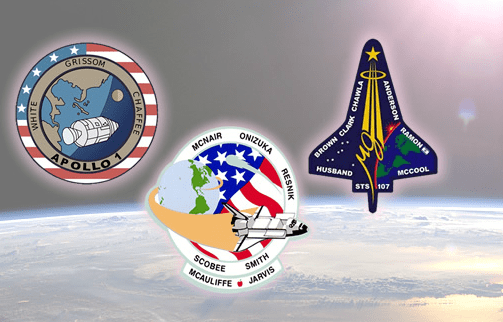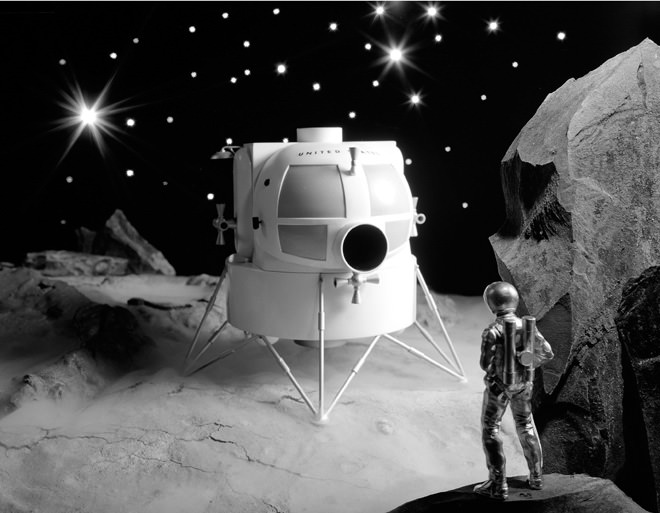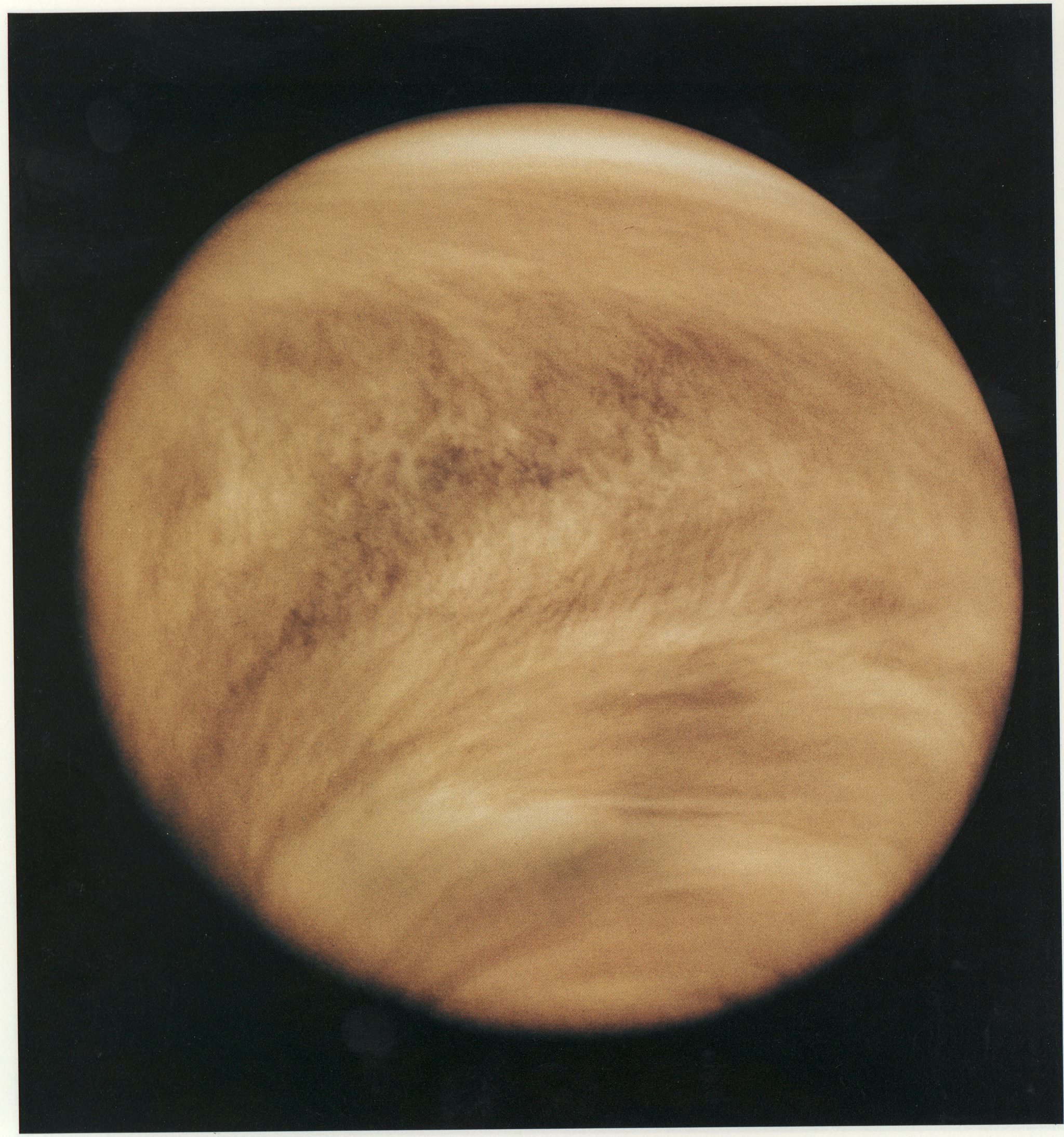If you weren’t able to watch live, this is a fun exchange between the current astronauts in orbit, talking with one of the first people ever to see Earth from an orbital perspective. The astronauts aboard the International Space Station talked with Senator John Glenn during an in-flight call this week, to celebrate the 50th anniversary of Glenn’s historic Friendship 7 space flight. The event was part of NASA’s Future Forum at The Ohio State University in Columbus, Ohio.
Friendship 7: 50th Anniversary of John Glenn’s Flight
On Feb. 20, 1962, John Glenn launched on the Friendship 7 flight, or Mercury 6, the first human orbital flight for NASA. Last night NASA premiered a video to celebrate the 50th anniversary of the flight, and have now made it available to share.
Glenn launched at 9:47:39 am EST from Cape Canaveral, orbiting Earth three times, with his flight lasting 4 hours and 55 minutes. In total he flew 121,793 km (75,679 miles) reaching a speed of 28,234 km/h (17,544 mph.)
Why was his flight named Mercury 6, and why the nickname of Friendship 7?
Continue reading “Friendship 7: 50th Anniversary of John Glenn’s Flight”
NASA Shuts Down Its Last Mainframe Computer
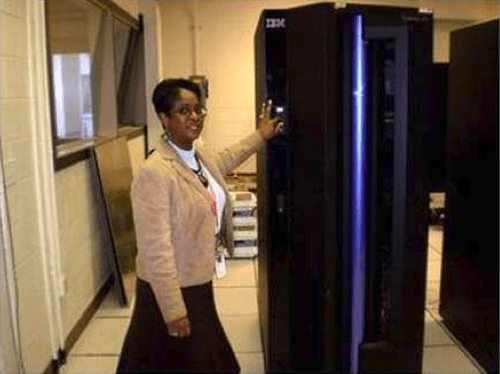
[/caption]
NASA has just powered down its last mainframe computer. Umm, everyone remembers what a mainframe computer is, right? Well, you certainly must recall working with punched cards, paper tape, and/or magnetic tape, correct? That does sound a little archaic. “But all things must change,” wrote Linda Cureton on the NASA CIO blog. “Today, they are the size of a refrigerator but in the old days, they were the size of Cape Cod.”
The last mainframe being used by NASA, the IBM Z9 Mainframe, was being used at the Marshall Space Flight Center. Cureton described the mainframe as a “ big computer that is known for being reliable, highly available, secure, and powerful. They are best suited for applications that are more transaction oriented and require a lot of input/output – that is, writing or reading from data storage devices.”

In the 1960’s users gained access to the huge mainframe computer through specialized terminals using the punched cards. By the 1980s, many mainframes supported graphical terminals where people could work, but not graphical user interfaces. This format of end-user computing became obsolete in the 1990s when personal computers came to the forefront of computing.
Most modern mainframes are not quite so huge, and excel at redundancy and reliability. These machines can run for long periods of time without interruption. Cureton says that even though NASA has shut down its last one, there is still a requirement for mainframe capability in many other organizations. “The end-user interfaces are clunky and somewhat inflexible, but the need remains for extremely reliable, secure transaction oriented business applications,” she said.
But today, all you need to say is, “there’s an app for it!” Cureton said.
Far Above the World
[/caption]
28 years ago today, NASA astronaut Bruce McCandless left the relative safety of Challenger’s payload bay and went untethered into orbit around Earth, venturing farther than anyone ever before.
The historic photo above was taken when McCandless was 320 feet from the orbiter — about the length of an American football field, or just shy of the width of the International Space Station.
The free-flying endeavor was possible because of McCandless’ nitrogen-powered jet-propelled backpack, called a Manned Maneuvering Unit (MMU). It attached to the space suit’s life-support system and was operated by hand controls, allowing untethered access to otherwise inaccessible areas of the orbiter and was also used in the deployment, service and retrieval of satellites.
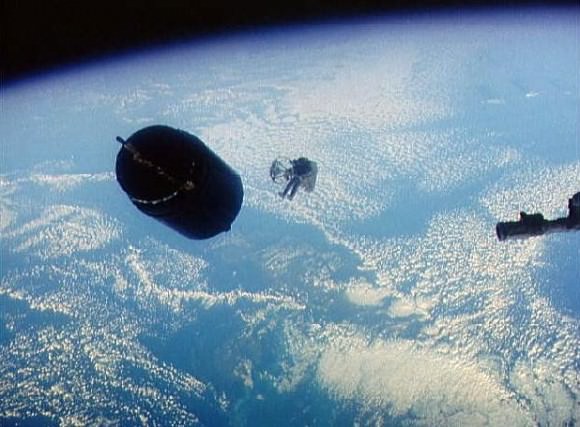
The MMU used a non-contaminating nitrogen propellant that could be recharged in the orbiter. It weighed 140 kg (308 lbs) and has a built-in 35mm camera.
After the Challenger disaster, the MMU was deemed too risky and was discontinued. But for a brief period of time in the early ’80s, humans had the means for really “soaring to new heights”.
Newsreel Footage of Explorer 1
Here’s a blast from the past: 54 years ago on January 31, 1958, Explorer 1 was the first satellite sent into space by the United States. The U.S. Army Ballistic Missile Agency was directed to launch a satellite following the Soviet Union’s successful Sputnik 1 launch on October 4, 1957. The 13-kg (30-pound) Explorerer satellite was launched by 3-stage Redstone missile. This newsreel footage also includes a famous scene where Werner von Braun and scientist James Van Allen lift a model of the satellite triumphantly above their heads.
Continue reading “Newsreel Footage of Explorer 1”
Remembering NASA’s Lost Astronauts
[/caption]
Today is NASA’s Day of Remembrance, a occasion to recall the seventeen astronauts who have died in pursuit of space exploration. The anniversaries of each accident — Apollo 1, Challenger, and Columbia — fall eerily close together, and give us recourse to stop and think about the cost of traveling beyond our planet.
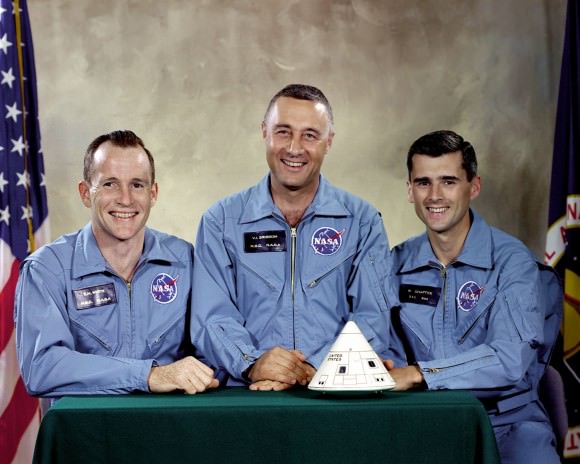
On January 27, 1967, the Apollo 1 crew was killed when a fire broke out in the command module during a routine prelaunch test. Engineers outside the spacecraft were unable to open the hatch and the crew died of asphyxiation.
Commander Gus Grissom was one of NASA’s first astronauts, a veteran of the Mercury and Gemini programs. Senior pilot Ed White was a Gemini veteran already in the history books as the first American to complete extra-vehicular activity, more commonly known as a spacewalk. The mission’s pilot was Roger Chaffee, a rookie whose first flight would be Apollo 1.
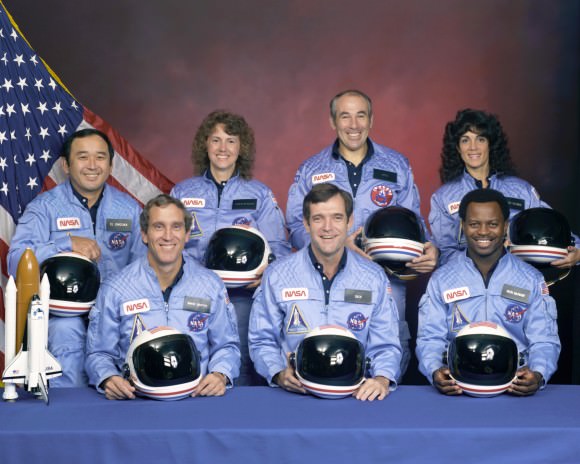
On January 28, 1986, the NASA’s Shuttle program experienced its first major setback. Just 73 seconds after the launch of STS-51, one of the external booster rockets failed. A faulty o-ring didn’t make a tight seal over one of the joints and a jet of hot flame escaped. This breached the external fuel tank, allowing the liquid hydrogen and liquid oxygen it contained to come into contact. The fuel ignited and the tank exploded. The force ripped the Challenger orbiter apart, killing the crew of seven.
Commander Dick Scobee, Mission Specialists Ronald McNair, Ellison Onizuka, and Judith Resnick, as well as Pilot Michael Smith were veteran astronauts. Payload specialist Gregory Jarvis was making his first flight into space, as was Christa McAuliffe. McAuliffe, the most recognizable member of the crew, was part of NASA’s Teacher in Space program. Her participation on the flight symbolized the accessibility of space and was an inspiration to children. Millions of students across the nation had followed her story and saw the disaster unfold on live television.
On February 1, 2003, the orbiter Columbia disintegrated during reentry; NASA lost contact with the crew just 16 minutes before its planned landing. A piece of foam had fallen from one of the external solid rocket boosters during launch, tearing a hole in the orbiter’s wing. With its structural integrity compromised, the forces of reentry became too great, and the spacecraft fell apart. None of the crew survived.
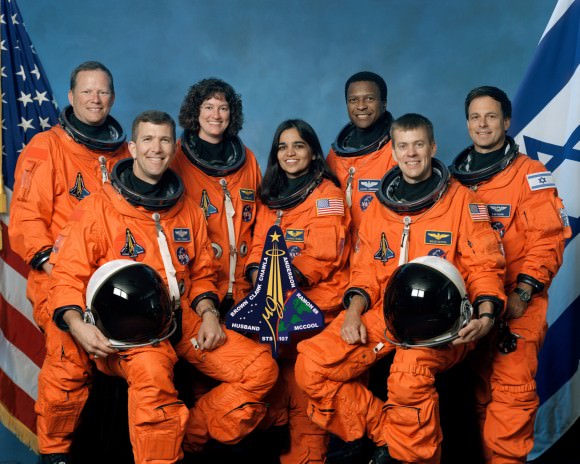
Commander Rick husband was a veteran astronaut, as were Mission Specialists Kalpana “K.C.” Chawla and Michael Anderson. The rest of the crew made their first spaceflight on the STS-107 mission: Pilot Willie McCool, Payload Specialist Ilan Ramon and Mission Specialists Laurel Salton Clark and David Brown.
The very thin silver lining, and what we should bear in mind as we mourn fallen astronauts, is that NASA has learned from these experiences. The sacrifices these men and women have made has made spaceflight safer. Risk is a inescapable part of human space exploration, but that doesn’t make it not worthwhile.
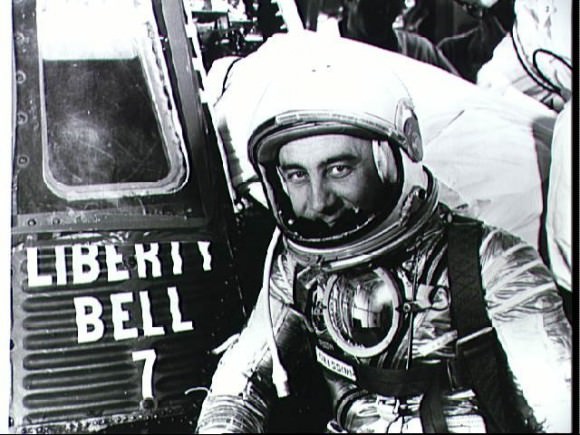
Gus Grissom serendipitously wrote his memoirs during the Gemini program, and address the risk inherent in spaceflight in his closing paragraph. I can think of no better words, and so I’ll let Grissom set the tone we ought to take when remembering those lost in pursuit of space exploration: “There will be risks, as there are in any experimental program, and sooner or later, inevitably, we’re going to run head-on into the law of averages and lose somebody. I hope this never happens… but if it does, I hope the American people won’t feel it’s too high a price to pay for our space program.”
Source: NASA
A Wrinkled Moon
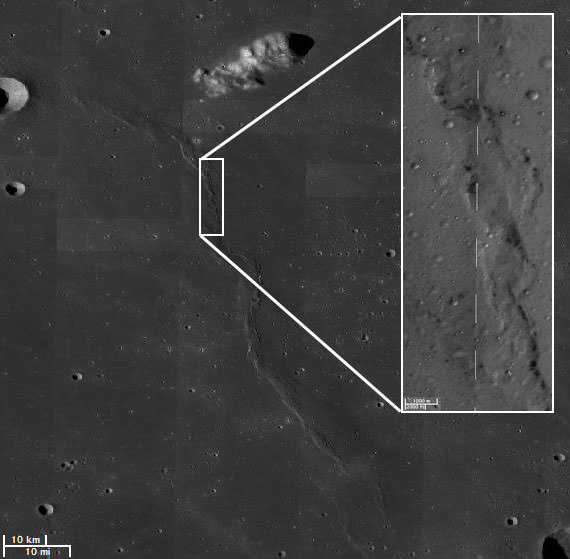
[/caption]
Wrinkle ridges have been seen on the surface of the Moon for over a century. Studies of these interesting features began as early as 1885, with telescopic photographs, and continued beyond the Apollo era, with satellite and lander observations. Scientists thought they understood them, but the latest images from the Lunar Reconnaissance Orbital Camera (LROC) suggest we may not know the whole story.
By definition, wrinkle ridges are narrow, steep-sided ridges that form predominantly in volcanic regions. They are very complex features, which can be either straight or curved, or even be braided and zig-zagged. Their width can be anything from less than 1 km to over 20 km. And their heights range from a few meters (say the height of an average room) to 300 meters (about the height of a 100-story sky scraper). They are also asymmetric, with one side of the ridge being higher than the other. Often, these things sit on top of a gentle swell in the landscape. Features like this have been found on a number of planets throughout the Solar System, including the Moon, Mars, Mercury, and Venus.

Image credit: NASA/GSFC/Arizona State University and the author
Click on the image to explore the LROC data from this area in greater detail
The earliest researchers of lunar wrinkle ridges saw them through telescopes. When looking at the terminator (the line between the dark side and the lit side of the Moon), the angle of the Sun causes spectacular shadows to highlight the topography, allowing these otherwise subtle features to be seen. Scientists in the late 19th century believed that these wrinkle ridges, which were found predominantly in the volcanic mare regions, formed when the cooling magma shrank. The chilled crust at the very top of this magma body was now too large, and wrinkles had to form to accommodate the difference. This process was often compared to the wrinkled skin of a shriveled apple, or the skin on our hands as we age.
The dawn of the space age introduced orbiting satellites, which circled the Moon collecting images that were more detailed than had been possible ever before. Data from the 1960’s the Lunar Orbiter (LO) program, whose mission was to photograph the Moon in preparation for the Apollo missions, showed many more of these wrinkle ridge features.
Some researchers felt the LO data pointed to a volcanic origin for wrinkle ridges. They saw lava flows emanating from the wrinkle ridges and embaying impact craters. They suggested that lava flowed to the surface along linear fractures that exploited zones of weakness in the lunar crust (presumably, these weaknesses formed when impacts created the basins that lunar mare occupy). Lava that extruded onto the surface formed the wrinkle ridge features, while magma that intruded below the surface formed the regional swell the ridges sit on.
The Apollo missions, however, were able to provide information about what was happening below the surface, with the Apollo Lunar Sounder Experiment (ALSE). Data collected over a wrinkle ridge in the southeastern portion of Mare Serenitatis showed that there was some kind of topographic structure beneath the thin mare layers in this area. This suggested that wrinkle ridges were the surface expressions of thrust faults in the underlying crust. This interpretation was appealing because it explained why some wrinkle ridges are found outside of mare areas.
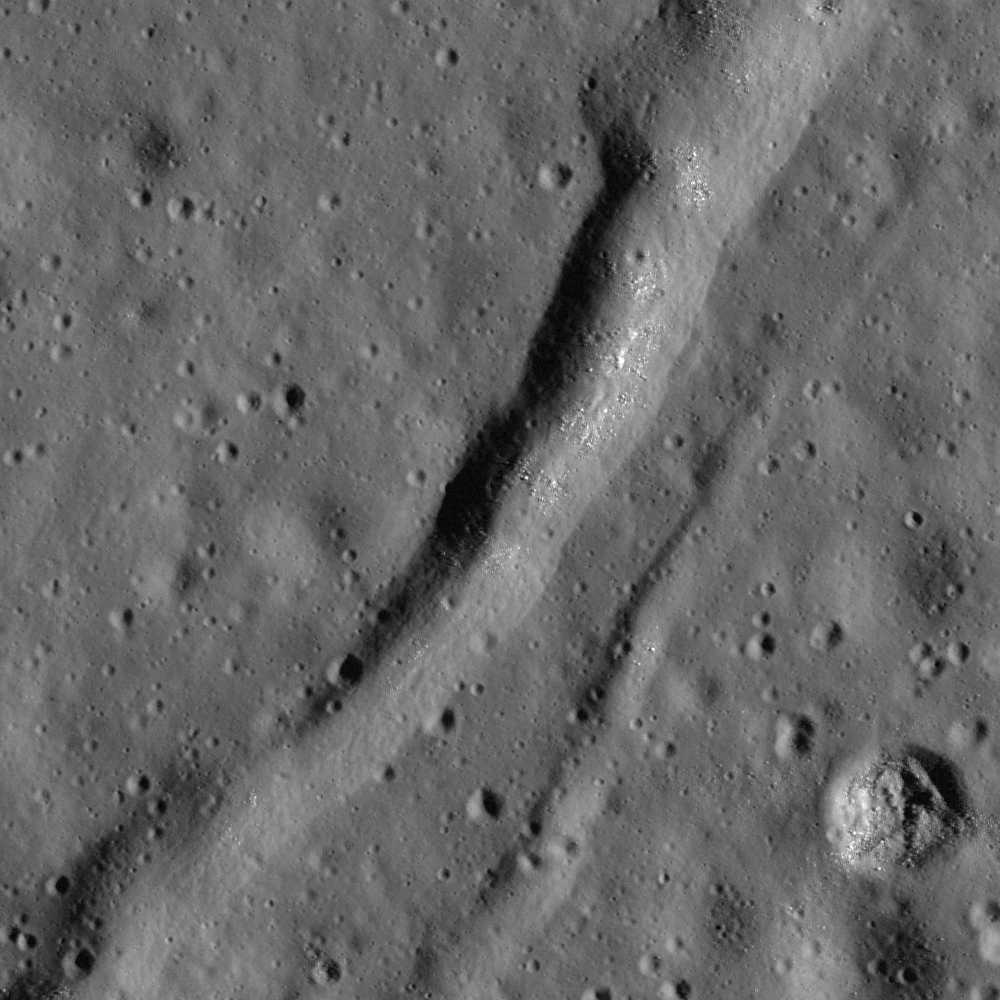
Image credit: NASA/GSFC/Arizona State University
Click on the image to learn more about this discovery from NASA's LROC team.
Later, studies of wrinkle-like features on Earth refined our understanding of how these features form. Now the thinking is that wrinkle ridges form by tectonic buckling of the mare areas and their surroundings. When mare lavas are extruded on the surface of the Moon, they fill up the impact basins in a series of basalt layers. The thinned crust left by the basin-forming process can’t support the weight of the mare, so the entire structure sags. The mare layer can become decoupled from the underlying regolith (the “soil” layer that impacts created between the time the basin was formed and when the first mare lavas extruded) and slide towards the sagging centre. As it does so, it bunches up in places where the decoupling is not complete. This creates a series of thrust faults at the base of the mare layer, which show up as wrinkle ridges at the surface. This decoupling process is more pronounced for thinner mare layers, which explains why we often see wrinkle ridges at the edges of a mare.
Recent findings from the Lunar Reconnaissance Orbiter Camera (LROC) may challenge this current understanding of wrinkle ridge formation. LROC images from the mare in Tsiolkovskiy crater have identified wrinkle ridges that are considerably different from the ones seen before. For one, these wrinkle ridges are not asymmetrical in profile, but have a uniformly curved shape. Also, they are much smaller, measuring less than 100 meters in width, as opposed to the 1-20 km widths seen for other wrinkle ridges.
It remains to be seen if these new wrinkle ridges will again change our understanding of how these enigmatic features form. The discovery of these particular ridges is so new that there is nothing yet published about them! Perhaps this image and others like it will help us learn more about these enigmatic features and answer questions such as: does this new wrinkle ridge represent the beginnings of their formation process and that all such ridges started out so small and symmetrical? Or maybe we’ll find that they are extrusions of particularly viscous lava, which have barely protruded above the surface along a linear fault.
Scientists plan to target this area for further data acquisition, because only more data from LRO and further research will help solve the mysteries of the wrinkled Moon.
Strait of Hormuz Shot from the International Space Station – World Strategic Flashpoint
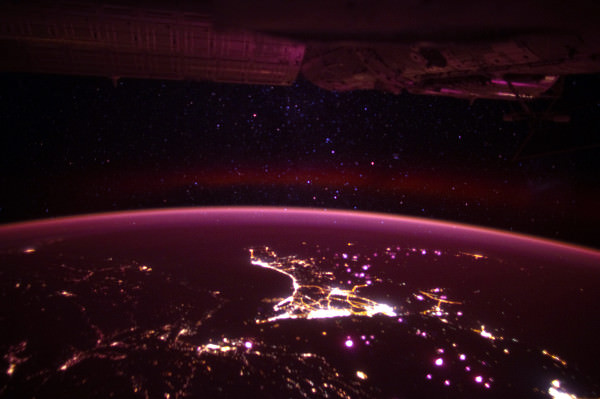
[/caption]A beautiful and peaceful Christmas-time picture of The Strait of Hormuz was shot from the International Space Station (ISS) soaring some 250 miles (400 kilometers) overhead on Christmas Eve, 24 Dec 2011.
Today, the economically vital Strait of Hormuz is a ‘Flashpoint of Tension’ between Iran and the US and much of the rest of the world community because of official threats by Iranian government officials to shut the highly strategic waterway to crude oil tankers that transport the lifeblood of the world’s economy.
The timely image above was just tweeted by NASA Astronaut Ron Garan who wrote; “Interesting peaceful pic of the #StraightofHormuz #FromSpace taken on Christmas Eve (12/24/11) from the #ISS”. Garan served aboard the ISS from April to September 2011 as a member of the Expedition 27/28 crews.
The Strait of Hormuz lies at the mouth of the Persian Gulf between Iran and the Arabian Peninsula and is a major chokehold of the world’s energy consumption.
At its narrowest point, the Strait is only 34 miles (54 kilometers) wide. The vital shipping lanes span barely 2 miles (3 kilometers) in width in each direction (see maps below).
See more ISS photos of the Persian Gulf region and the Strait, below.
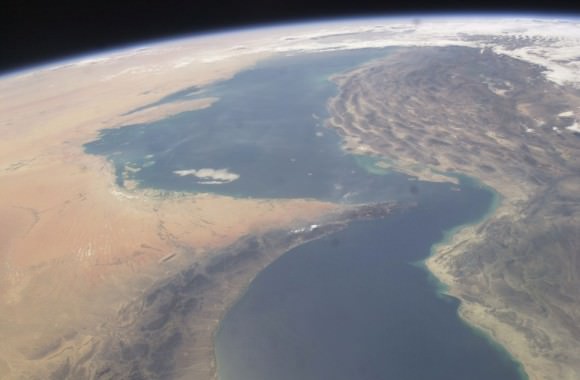
Taken from the International Space Station on Sept. 30, 2003. United Arab Emirates, Oman and Saudi Arabia at left, Iran at right. Credit: NASA
Each and every day, about 20% of the world’s daily petroleum consumption is shipped through the extremely narrow channel on gigantic Oil tankers. Any disruption of petroleum shipments would instantly send crude oil prices skyrocketing to exhorbitant levels that could wreak havoc and rapidly lead to a worldwide economic depression and a devastating war between Iran and the US and its allies.
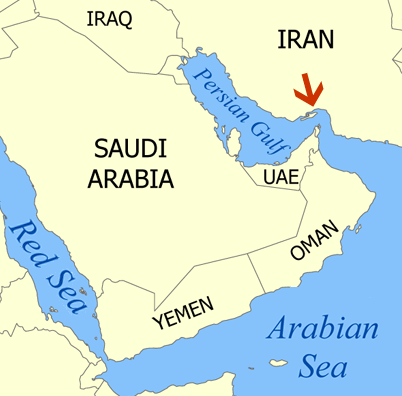
In recent days Iranian boats have approached US Naval warships at high speeds while they were heading through the Strait of Hormuz – playing a potentially deadly game of cat and mouse that could spin out of control in a single misstep, even if unintentional.
Clashes would easily disrupt the crude oil tanker shipping traffic.
Several Iranian speedboats came within about 800 yards of the US vessels in recent days as a war of words has flared over oil and Iran’s nuclear program as tensions escalate.
Video Caption: Iranian speedboats closely approach US Navy ships at high speed in the Strait of Hormuz on Jan. 6, 2012. Credit: US Dept of Defense
The US and allied fleet operates in the Gulf region to protect the oil shipments and the oil installations of a number of Arab countries including Saudi Arabia.

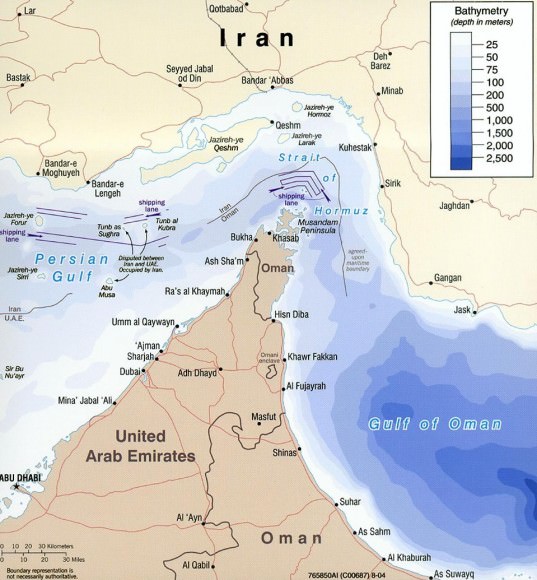
An international crew of six men from the US, Russia and Holland are currently in residence aboard the ISS running science experiments.
ISS Expedition 30 Commander and US astronaut Dan Burbank snapped gorgeous photos of Comet Lovejoy during this Christmas season – look here.
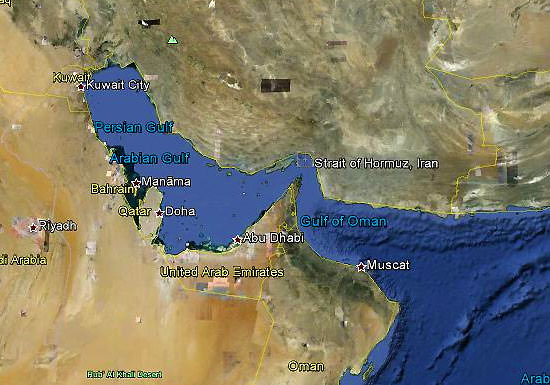
Look here for dazzling photos of the ISS crossing the Moon – shot just days ago from NASA’s Johnson Space Center in Houston
Read Ken’s recent features about the ISS here:
Dazzling Photos of the International Space Station Crossing the Moon!
Solar Powered Dragon gets Wings for Station Soar
Absolutely Spectacular Photos of Comet Lovejoy from the Space Station
NASA announces Feb. 7 launch for 1st SpaceX Docking to ISS
Missions that Weren’t: One-Way Mission to the Moon
[/caption]
When President Kennedy promised America a lunar landing in 1961, he effectively set the Moon as the finish line in the space race. In the wake of his speech, NASA began scrambling to find a way to reach the Moon in advance of the Soviet Union, which at the time held a commanding lead in space. Apollo, already on the drawing board as an Earth orbiting program, was revised to reflect the lunar goal and Gemini was established as the interim program.
The pieces were in place; all NASA needed was a way to get to the Moon. Against this pressing background, two men proposed a desperate and direct mission to get an American on the Moon as quickly as possible.
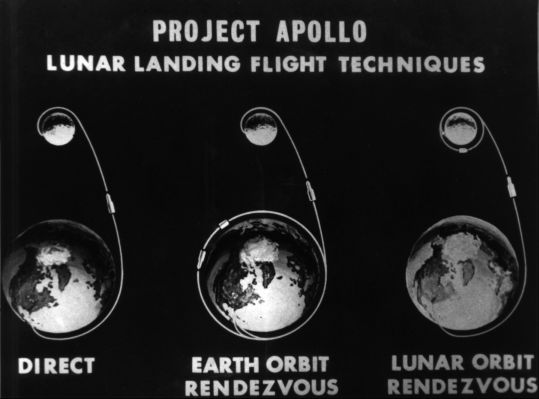
The proposal came from two Bell Aerosystems Company employees. John M. Cord was a Project Engineer in the Advanced Design Division and Leonard M. Seale was a psychologist in charge of the Human Factors Division. At the Institute of Aerospace Sciences in Los Angeles in 1962, the pair unveiled their “One-Way Manned Space Mission” proposal.
The plan called for a one-man spacecraft to follow a direct ascent path to the Moon. Ten feet wide and seven feet tall, the empty spacecraft weighed less than half the much smaller Mercury capsule. Inside, the astronaut would have enough water for 12 days, oxygen for 18 with a 12-day emergency reserve, a battery-powered suit and backpack, and all the tools and medical supplies he might need.
He would land on the Moon after a two-and-a-half day trip and have just under ten days to set up his habitat. As part of his payload, the astronaut would arrive with four cargo modules with pre-installed life support systems and a nuclear reactor to generate electrical power. Two mated modules would become his primary living quarters, while the others placed in caves or buried in rubble — a feature Cord and Seale assumed would dominate the lunar landscape — would provide a shelter from solar storms.
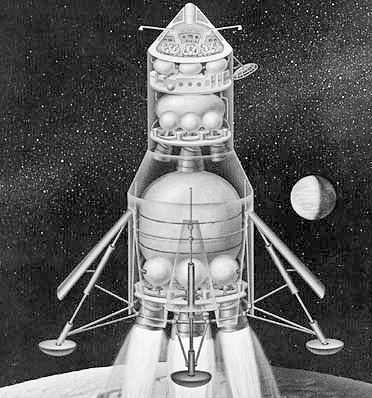
With his temporary home set up, he would wait a little over two years for another mission to come and collect him. Cord and Seale estimated that this mission could be launched as early as 1965, a year of expected minimal solar activity. Larger launch vehicles capable of sending the three-man Apollo spacecraft would be ready by 1967. The one-way spaceman would have a long but finite stay on the Moon.
This proposal was incredibly practical. Since the astronaut wouldn’t be launching from the lunar surface, he wouldn’t need to carry the necessary propellant. Since he would return to Earth in another spacecraft, his own spacecraft wouldn’t need a heavy heat shield or parachutes. The one-way mission was a light and efficient proposal.
But it was also dangerous. The proposal didn’t include any redundancies; the direct ascent path gave the astronaut no chance to abort his mission after launch. He would have to deal with any problems that arose knowing he wouldn’t be able to make a quick return home.
Luckily for the possible astronaut the proposal was never seriously considered. In July 1962, a few weeks after the one-way mission was proposed, NASA announced its selection of the more complicated but safer Lunar Orbit Rendezvous (LOR) mode for Apollo missions.
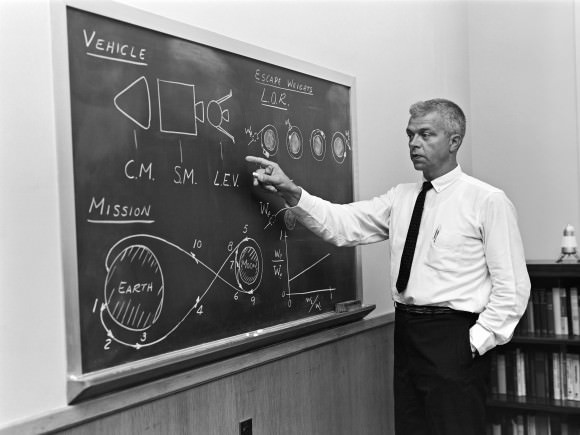
Missions that Weren’t: NASA’s Manned Mission to Venus
[/caption]
In the mid-1960s, before any Apollo hardware had flown with a crew, NASA was looking ahead and planning its next major programs. It was a bit of a challenge. After all, how do you top landing a man on the Moon? Not wanting to start from scratch, NASA focused on possible missions that would use the hardware and software developed for the Apollo program. One mission that fit within these parameters was a manned flyby of our cosmic twin, Venus.
As one of our neighbouring planets, a mission to Venus made sense; along with Mars, it’s the easiest planet to reach. Venus was also a mystery at the time. In 1962, the Mariner 2 spacecraft became the first interplanetary probe. It flew by Venus, gathered data on its temperature and atmospheric composition before flying off into a large heliocentric orbit. But there was more to learn, making it a destination worth visiting.
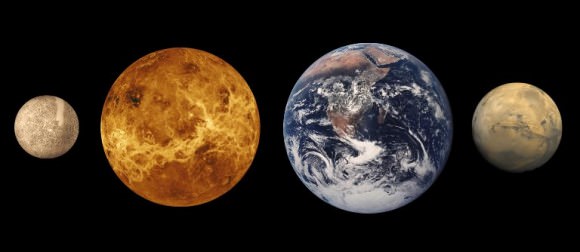
But beyond being relatively practical with great potential for scientific return, a manned mission to Venus would prove that NASA’s spacecraft and astronauts were up for the challenges of long-duration interplanetary flight. In short, it would give NASA something exciting to do.
The mission proposal was published early in 1967. It enhanced the Apollo spacecraft with additional modules, then took the basic outline of an Apollo mission and aimed it towards Venus instead of the Moon.
The crew would launch on a Saturn V rocket in November of 1973, a year of minimal solar activity. They would reach orbit in the same Command and Service Modules (CSM) that took Apollo to the Moon. Like on Apollo, the CSM would provide the main navigation and control for the mission.
Going to the Moon, Apollo missions had the crew turn around in the CSM to pull the LM out of its launch casing. On the mission to Venus, the crew would do the same, only instead of an LM they would dock and extract the Environmental Service Module (ESM). This larger module would supply long-duration life support and environmental control and serve as the main experiment bay.
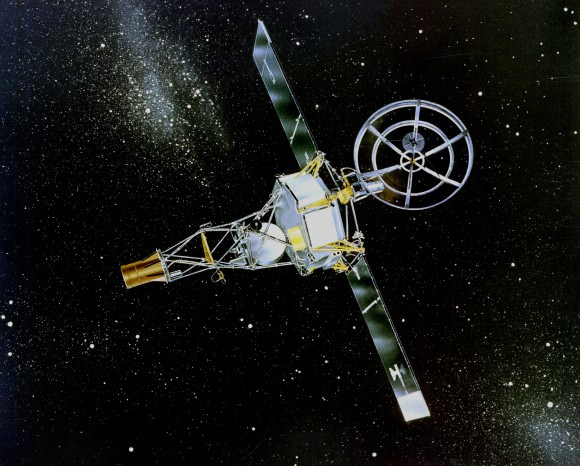
With these two pieces mated, the upper S-IVB stage of Saturn V would propel the spacecraft towards Venus. Once its fuel store was spent, the crew would repurpose the S-IVB into an additional habitable module. Using supplies stored in the ESM, they would turn the rocket stage into their primary living and recreational space. On its outside, an array of solar panels would power each piece of the spacecraft throughout the mission.
The crew would spend 123 days traveling to Venus. Ten hours of each day would be dedicated to science, mainly observations of the solar system and beyond with a telescope mounted in the ESM. UV, X-ray, and infrared measurements could create a more complete picture of our corner of the universe. The rest of each day would be spent sleeping, eating, exercising, and relaxing — a full two hours of every day would be dedicated to unstructured leisure, a first for astronauts.
Like Mariner 2 before them, the crew would flyby Venus rather than go into orbit. They would only have 45 minutes to do close optical observations and deploy probes that would send back data on the Venusian atmosphere in realtime.
After the flyby, the spacecraft would swing around Venus and start its 273 day trip back to Earth. Like on an Apollo lunar mission, the crew would transfer back into the Command Module before reentry taking anything that had to return to Earth with them. They would jettison the S-IVB, the ESM, and the Service Module, switch the CM to battery power, and plunge through the atmosphere. Around December 1, 1974, they would splashdown somewhere in the Pacific Ocean.
Though worked out in great detail, the proposal was a thought experiment rather than something NASA was seriously considering. Nevertheless, Apollo-era technology would have managed the mission.
Source: NASA Manned Venus Flyby Study


